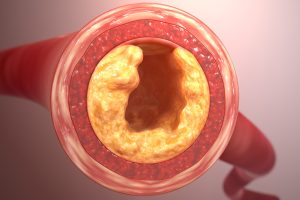Maintaining good health requires frequent monitoring of your body. Your cholesterol levels should be at the top of your measurement list since understanding them can help you ward off serious health issues. You may know that having high cholesterol is bad, but it’s not quite as simple as that. There are different types of cholesterol in your blood – some good and some bad. Understanding each of the components can help you and your doctor to develop a strategy to keep your levels in the healthy range.

The American Heart Association recommends that adults over the age of 20 have a cholesterol test – which measures HDL (good) cholesterol, LDL (bad) cholesterol, triglycerides, and total cholesterol – every five years. The test involves drawing your blood after you fast for at least 12 hours.
If your cholesterol levels are high, or if you have certain risk factors such as coronary heart disease – your doctor may recommend more frequent tests.
The Good: HDL Cholesterol
High-density lipoprotein (HDL) cholesterol is the “good” cholesterol. Its job is to carry the bad cholesterol in your blood back to the liver, where it is excreted. High levels of HDL cholesterol are associated with a lower risk for coronary heart disease, and vice-versa. HDL cholesterol may also reduce inflammation and have a positive effect on blood clotting.
If your HDL cholesterol level is above 60 mg/dL, you are at a lower risk for developing heart disease. If that level is below 40 mg/dL (for a man) or 50 mg/dL (for a woman), your risks increase significantly.
The Bad: LDL Cholesterol
Low-density lipoprotein (LDL) is the “bad” cholesterol. When levels are too high, it sticks to the walls of your arteries and causes damage. The buildup is called plaque, and it causes your arteries to harden and become narrower. If a blood clot forms, it can get stuck in these narrow arteries and create a blockage, leading to a heart attack or stroke.
Less than 100 mg/dL is the optimal level of LDL cholesterol. Above 130 mg/dL means you are borderline high, and above 190 mg/dL is very high.
High Triglycerides
Triglycerides are a form of fat in your blood. They come from two sources: Your body makes them, and they also come from the fat in the food that you eat. Overeating can lead to high triglyceride levels, especially if you eat foods high in trans fats and saturated fats.
If your triglyceride levels are less than 150 mg/dL, you are in the normal range. Above 150 mg/dL puts you in the borderline high to high range, and above 500 mg/dL is very high.
Total Cholesterol
Total cholesterol is a measure of the HDL, LDL, and other lipid levels in your blood. It’s a good benchmark, and levels below 200 mg/dL are ideal. However, it’s important to also know the ratio of HDL to LDL to ensure that you are healthy and at low risk for coronary heart disease, even if your total cholesterol is in the normal range.
Ways to Improve Your Cholesterol Levels
Making dietary changes is a good way to lower your cholesterol levels. For example, removing trans fat from your diet can help, since it increases LDL (bad) cholesterol and decreases HDL (good) cholesterol. Additionally, losing weight and increasing the amount you exercise will also improve your levels, especially the ratio of HDL to LDL cholesterol.
About Crozer Keystone Staff
Crozer-Keystone Health System’s physicians, specialists and advanced practitioners are committed to improving the health of our community through patient-centered, quality care across a full continuum of health services. Crozer Brinton Lake is Crozer-Keystone’s comprehensive outpatient care facility in western Delaware County, offering primary care, specialty services, outpatient surgery and advanced cancer treatment. Contact us: 300 Evergreen Drive, Glen Mills, PA 19342 http://www.crozerkeystone.org/Brinton-Lake 1-855-254-7425
- Web |
- More Posts(131)

Comments